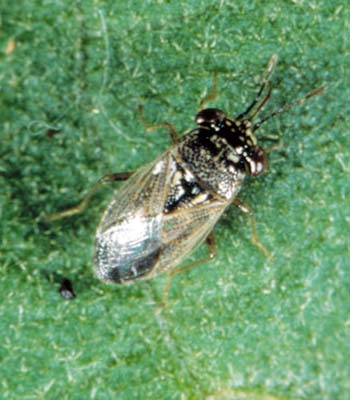
Adult Geocoris punctipes, a big-eyed bug.
(Photographer: James Castner, University of Florida)
Male and female big-eyed bugs of the same species are similar in appearance. These insects are quite small (about 0.4 cm long) with oblong-oval bodies. The head is triangular shaped, and is broader than it is long. The common name is derived from the prominent eyes which curve backward and overlap the front of the thorax. The body and legs are generally all black to dark brown, but some species have a pale border along the sides of the abdomen. Nymphs of big-eyed bugs look similar to the adults, but are wingless.
After mating, the female lays eggs which hatch in about five to 10 days, depending on the temperature.
Big-eyed bugs are found throughout the United States.
Big-eyed bugs feed on insect and mite pests of turf, ornamental, and agricultural crops, such as chinch bugs, boll weevils, budworms and beet armyworms.
Images
To save the Web-optimized images shown below to your hard drive:
|
Click to access Display and Print quality images. |
|
Click to access Display and Print quality images. |
|
Click to access Display and Print quality images. |
|
Click to access Display and Print quality images. |